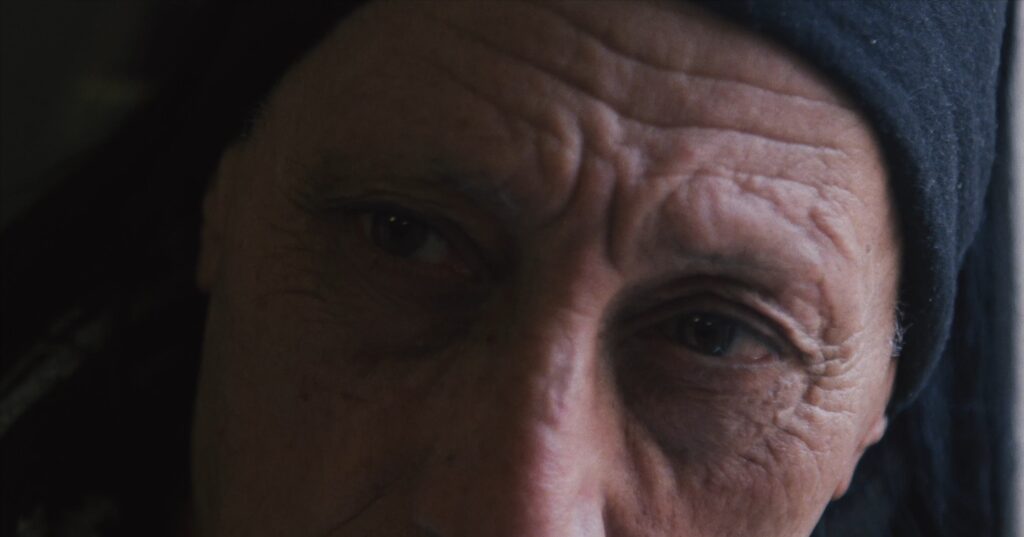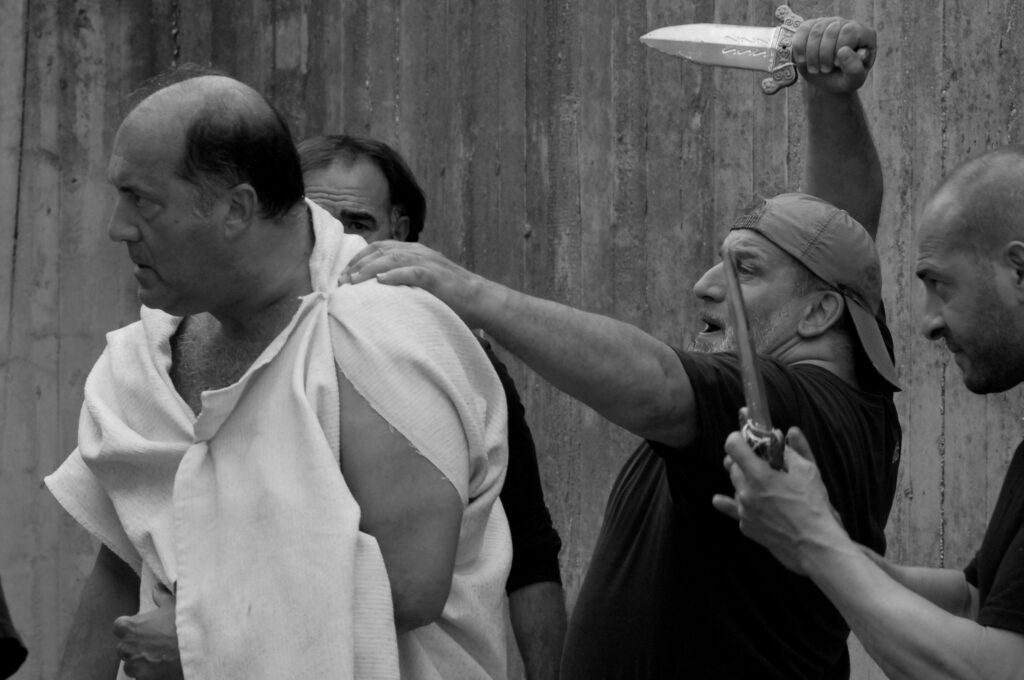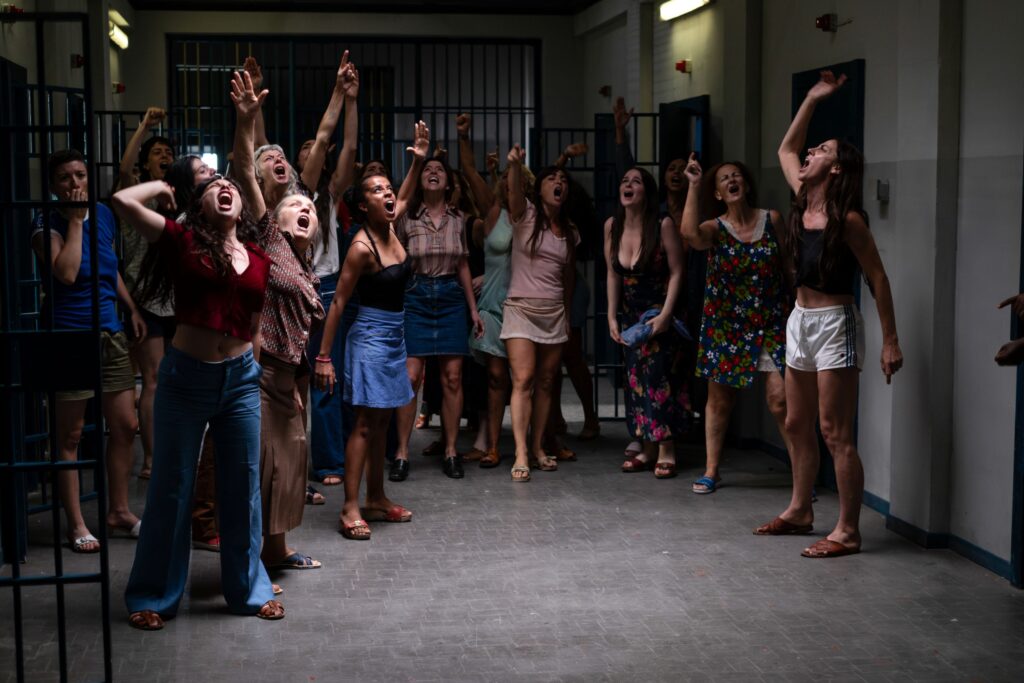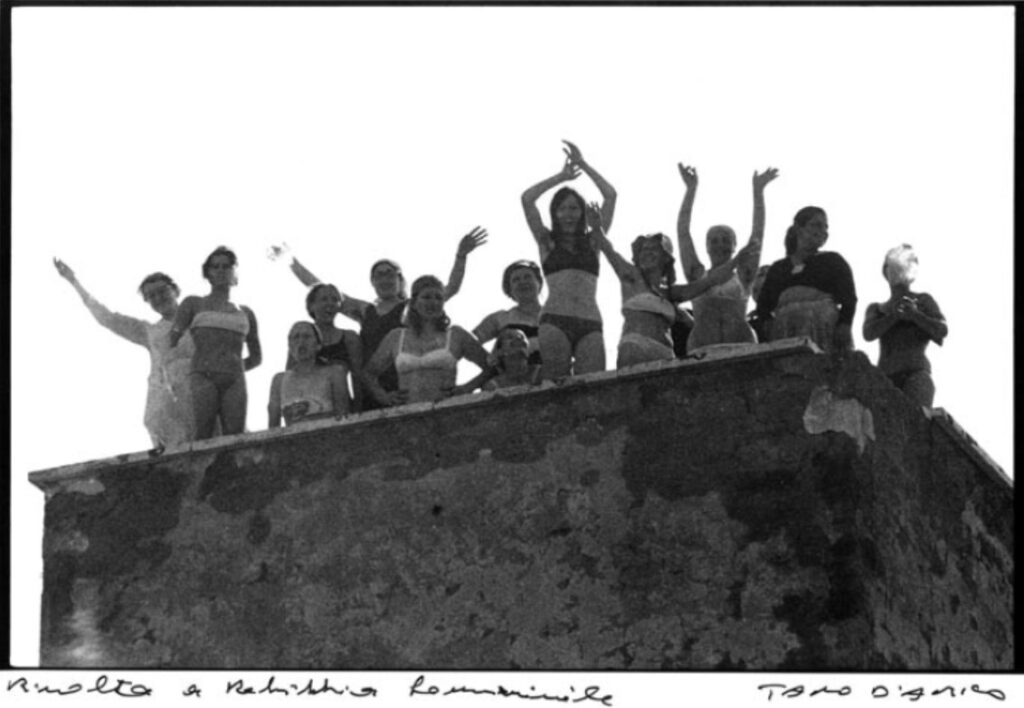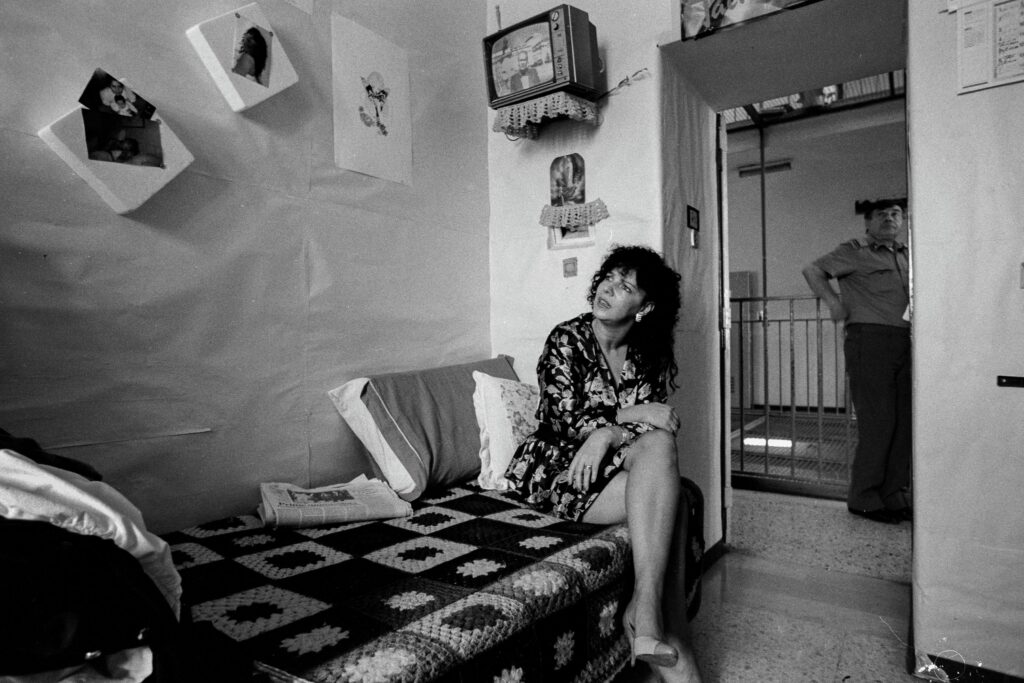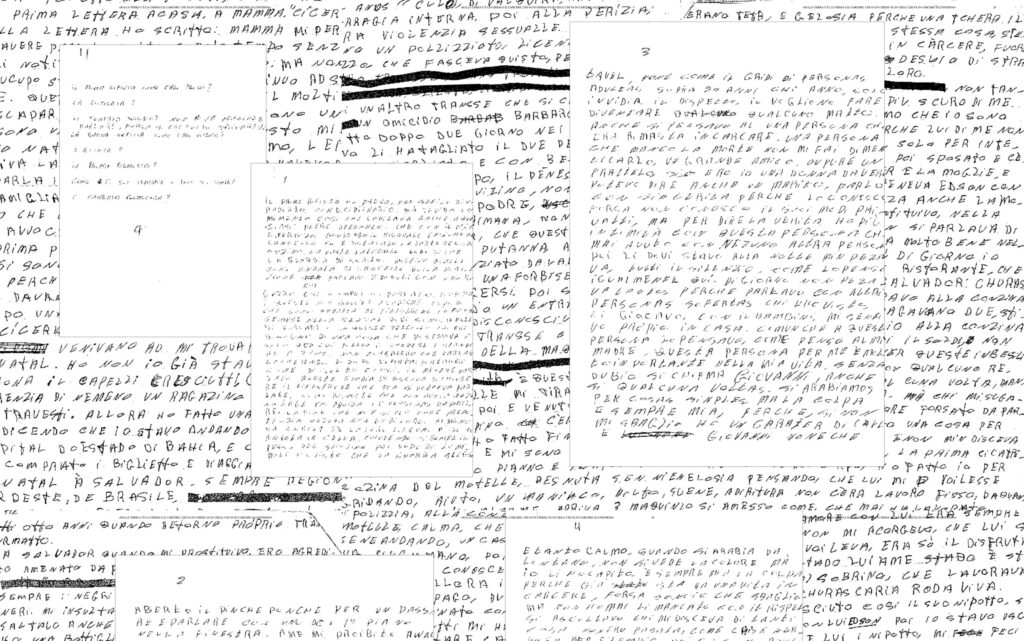Dembow a lo Dominicano

Dominican dembow is fast, functional, frequently funny, and so grounded in entrancing repetition that its songs are more like mantras, guided meditations for the body and body politic. Musically, the genre builds on two-beat units, a classic criollo two-step. Rhythms and refrains often repeat twice per measure, dancefloor imperatives as multivalent suggestions: que la choque! toma que toma! (crash it! take it!). Sometimes songs pivot on a single noun or adjective, declaimed ad absurdum. Intoning caliente eight times in as many beats is one way to stoke a fire, if not exactly a lyric. The ludic pleasures of dembow serve a simple but paramount end—pa que mueve, pa que lo bailes (so you move, so you dance), and the basic two-beat pattern that gives the genre its very name, has been serving this purpose for centuries, or even longer. But until recently, the world had never heard it played quite this way.
It's slightly distracting, but the name dembow—for the rhythm and the genre—is transliterated from a 1990 Shabba Ranks song about non-normative sex and imperialism. (He doesn’t approve of either.) Freighted source code, to be sure. But in the Spanish Caribbean and the post-reggaeton era, the term rarely carries the Jamaican meaning of the two-word phrase, “Dem Bow” (They Bow), which for Shabba signalled a rejection of submissive postures, whether sexual or political. More than the sentiment or the song, what really resonated outside of Jamaica was the beat. DJs, artists, and audiences in Puerto Rico and the Dominican Republic started using a new word, the concatenated dembow, as vernacular shorthand for a fundamental, familiar, tried-and-true rhythm, a rhythm that could at once be felt as deeply Dominican, Caribbean, Afrodiasporic, and utterly global. You know it well: boom-ch-boom-chick.

Jamaican producers of the 1980s and 90s were crucial vectors in bringing this age-old rhythm into modern form, reorienting dancehall reggae around percussive 3+3+2 loops and making instrumental riddims that could sound, at once, like traditional Afro-Caribbean music and, on the other hand, utterly fresh and current. Played by a drum-machine snare against a thumping four-on-the-floor kick, this rhythm, once known as the Cuban habanera and the Argentine tango—or in pre-colonial Kongo, as mbila a makinu (the call to the dance)—takes on a contemporary sheen. Minimalist, synthesised, percussive riddims caught fire in Jamaican dancehalls in the early 1990s, and then took flight, touching down in clubs, parties, and fiestas across the diaspora, including in New York, where dancehall’s booming beats resonated with Puerto Rican and Dominican neighbours—and where Jamaican-Panamanian vocalists worked with Jamaican ex-pats in local studios to popularise the reggae en español movement. It’s a short skip and jump from Brooklyn, the Bronx, the Barrio and Washington Heights to San Juan and Santo Domingo, where DJs in both cities started calling their own people to the dance using up-to-date versions of ancestral beats.
First and foremost: doing dembow a lo Dominicano meant doing things más rápido, as is often the Dominican way—as heard, say, in merengue típico where beats-per-minute (BPM) often exceed 160 and can approach 200.
The most iconic dancehall songs and riddims of the early 1990s initially served as instrumentals for live club routines by MCs, then as sample sources for chopped-and-looped mixtape collages, and finally as inspiration for new from-scratch productions that explored a broader, evolving template. Among these formative riddims and songs are Sly Dunbar’s Bam Bam, which drives Chaka Demus & Pliers’ “Murder She Wrote,” the Drum Song bassline of Dirtsman’s “Hot This Year,” the Fever Pitch bubble and sizzle under Cutty Ranks’s “Limb by Limb,” and the bouncy beat behind Shabba Ranks’s “Dem Bow,” which was produced by Jamaican production duo Steely & Clevie but has a crucial New York connection. Panamanian reggae en español pioneer Nando Boom recorded a translation of Ranks’s song in a New York studio within months of the original becoming a diasporic hit. Titled “Ellos Benia,” most of the lyrics are in Spanish, but for the chorus, Nando Boom intones the Jamaican-English chant, “Dem Bow.” The instrumental from this version, produced in New York by Jamaican studio-hand Dennis the Menace, is what became a canonical source in the proto-reggaeton scene—and, while only one of many such riddims in the mix, the term dembow became synonymous with the genre.
The Puerto Rican side of the story, and reggaeton, is better known than what happened to dembow on the other side of the Mona Passage. Initially, DJs and producers in the DR used the same dancehall sources as their peers in PR, but before long the Dominican approach to working with these records produced a more audibly Dominican style. First and foremost: doing dembow a lo Dominicano meant doing things más rápido, as is often the Dominican way—as heard, say, in merengue típico where beats-per-minute (BPM) often exceed 160 and can approach 200. Or, por ejemplo, the way my peluquero chats with his fellow barbers or bluetooth-girlfriends while giving me a careful fade. Dancehall and early reggaeton both hover around 100 BPM, but Dominican dembow beats are almost always far faster, usually above 110, recently hanging around 130 BPM, and sometimes as fast as 150. Dembow hits differently than reggaeton, with a pulse closer to techno. Lyrics too are, naturally, brisk and crisp, brimming with effortless mastery and streetwise swagger. Between the rapidity and repetition, the music tends toward trance: as if the beat won’t stop, and nor should you: suave, sigue, nunca te pare' (easy, onward, never stop). The party cannot end, friends, the beat must go on—your feet and hips too.
Dembow slowly came into its own between the mid-90s and 2010, with DJ Boyo pushing dancehall pastiche into Dominican territory and DJ Scuff leading the new wave with dense, kaleidoscopic megamixes. Since 2010, with the reach of viral videos such as Doble T y El Crok’s pixelated “Pepe” and the rise of breakout stars like El Alfa, the genre’s musical palette has grown alongside its popularity, locally and outside the DR. While the bedrock boom-ch-boom-chick abides, dembow beats can sound wildly different otherwise, flirting with EDM synths, trap minimalism, dancehall throwbacks, bachata fusions, or utterly whimsical samples. Yailin La Mas Viral’s “Bing Bong” (2024) layers sickly synths, electric bass, and car-horn stabs reminiscent of 2000s funk carioca, especially at 135 BPM, but at times the texture thins out to the most traditional percussion sources: hands clapping, a cowbell.
No Dominican artist has more effectively introduced dembow to the mainstream than El Alfa, thanks in part to his prominent collaborator, Bad Bunny. Fusing dembow with touches of trap—the sustained bass tones and brittle snares of the 808—El Alfa made dembow legible as another form of global pop or hip-hop. Years before Bad Bunny became the biggest artist in the world, he eagerly hopped aboard the “trap-bow” boat with El Alfa on the fun but nonsensical “Dema Ga Ge Gi Go Gu” (2018), and together they helped put “La Romana” (2018) on the map. Even after becoming a major pop star, Bad Bunny has continued to promote dembow as an integral part of his own sound. On “NUEVAYoL” (2025), the lead track and single from his latest album, Bad Bunny proudly points out the paradox of how global he’s gone with such local sounds: “¿Cómo Bad Bunny va a ser el rey del pop? Con reguetón y dembow” (How is Bad Bunny going to be the king of pop? With reggaeton and dembow). It’s an affirmation and an acknowledgement, and the bass-laden beat stands testament, bouncing along dembow-style at 120 BPM before jumping up to 128. “NUEVAYoL” may sample a salsa song and feature a reggaeton star, but it’s currently burning its way up dembow playlists.
Dominican dembow is not just cool and contemporary, it’s odd and hilarious, with artists and audiences making and holding space for absurdity and nonsense, surrealism and fantasy.
Dominican dembow is not just cool and contemporary, it’s odd and hilarious, with artists and audiences making and holding space for absurdity and nonsense, surrealism and fantasy, innuendo and earthy frankness of all sorts—from par-for-the-course cis-het braggadocio (from men and women alike) and ownership of sexual agency and potency, to articulations of feminist power and queer desire that both overlap with and comment on gender and sexual normativity. In 2012, La Delfy opened up space for gay and trans artists and drag performance in dembow, making waves locally with provocative songs such as “Dame Leche” (Give Me Milk) and “Toy Moja” (I’m Wet) which, aside from their explicit queerness, fit right into dembow’s horny aesthetic. Dominican women and LGBTQ artists, including Tokischa, Amara La Negra, La Materialista, Yaisel La Melodía, and La Perversa, have attained prominence in the dembow scene, and generally speaking, one hears more back-and-forth—both between songs and staged within them—between women and men (or between women and women). In that sense, dembow’s abiding strangeness, silliness, queerness, and openness seems to distinguish it from the mainstream of Latin music and pop more generally.

Not only is dembow funny, it’s fun. Perhaps this surfaces most clearly in dance. Dembow dance is freewheeling and joyful, drawing in a wide world of steps and moves while grounded in such embodied Dominican traditions as dramatic torso isolation and fancy footwork. While reggaeton dance centres on the sensual partnering known as perreo, with its faster tempos dembow invites a different set of responses—often more soloistic engagements, especially in a group setting. Dembow dance circulates on street corners and clubs, and on YouTube, TikTok, and Instagram, and the same precepts of virtuosity, rapidity, groove, and earthy humour run through it.
As music and dance, dembow is deeply Dominican—and international. As media, it circulates alongside other reggaeton variants, from Cuban reparto to Argentinian RKT, that are also finding adherents and audiences beyond the local. But as culture, it travels most directly via diaspora. Dembow lives where Dominicans do: in Puerto Rico, New Jersey, Boston, Miami—especially in New York, from Washington Heights to the Bronx, where bilingual dembow is surfacing in the drill scene, as on Diany Dior’s “ThiCK” (2025). Dembow also lives in Madrid, Spain and La Spezia, Italy. In far-flung, culturally distinct sites across the diaspora, dancing and incanting a lo Dominicano can create a sense of home away from home. Dembow emerges from a diasporic process of fusing the foreign with the familiar and finding shared ground to dance around; it should not surprise that dembow, in turn, and in diaspora, is re-routing, re-rooting, and fruiting.



